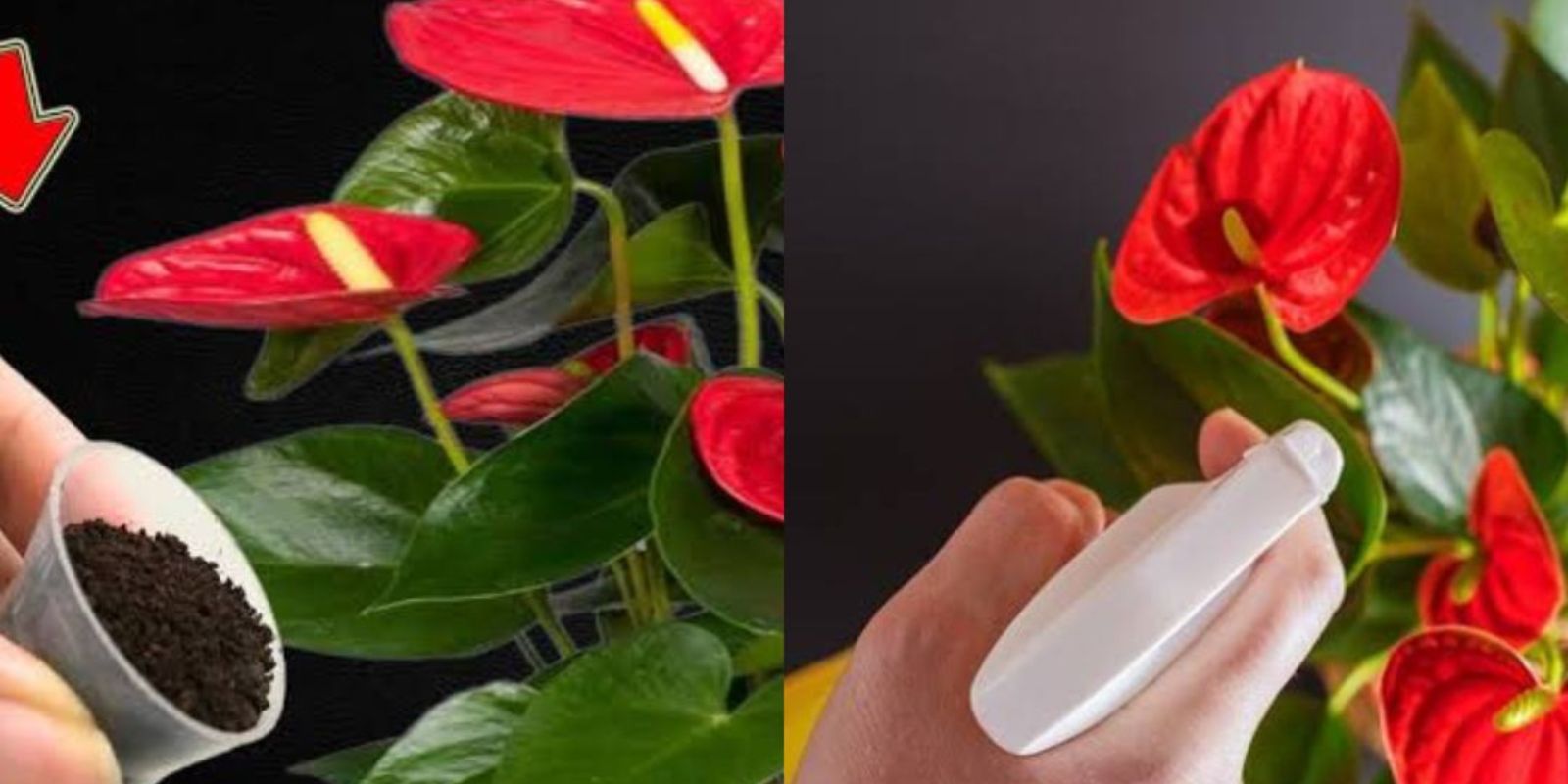Introduction
Anthuriums, also known as flamingo flowers or laceleaf plants, are among the most beautiful and exotic houseplants, admired for their glossy, heart-shaped leaves and long-lasting blooms. However, many plant enthusiasts struggle to keep their Anthuriums flowering consistently. The good news? With just one simple trick—applying a specialized fertilizer once a month—you can encourage your Anthurium to explode with blooms all year long!
In this comprehensive guide, we’ll explore everything you need to know about fertilizing Anthuriums, including the best types of fertilizers, how to apply them, and additional care tips to keep your plant thriving.
Why Fertilizing is Key to Anthurium Blooming
Anthuriums originate from tropical rainforests, where they thrive in rich, nutrient-filled soil. In indoor environments, they depend on us to provide those nutrients, and fertilizing regularly ensures they receive what they need to grow and bloom.
A well-fed Anthurium will:
✔️ Produce more vibrant and long-lasting blooms
✔️ Develop lush, healthy green leaves
✔️ Maintain strong roots for overall plant health
✔️ Resist common pests and diseases
The Monthly Fertilization Trick
If your Anthurium isn’t blooming as much as you’d like, the solution is simple: apply a high-quality fertilizer once a month. Here’s how:
Step 1: Choose the Right Fertilizer
Not all fertilizers are created equal! Anthuriums require a balanced fertilizer rich in nitrogen (N), phosphorus (P), and potassium (K). The best options include:
- 20-20-20 balanced fertilizer – This provides equal amounts of nitrogen, phosphorus, and potassium for overall growth.
- High-phosphorus fertilizer (e.g., 10-30-10) – Phosphorus encourages blooming and helps flowers last longer.
- Organic fertilizers – Options like diluted fish emulsion or compost tea can work wonders for Anthurium growth.
Step 2: Dilute Properly
Anthuriums are sensitive to over-fertilization, which can lead to root burn. Always follow the recommended dilution on the fertilizer package. A good rule of thumb is:
🔹 Liquid fertilizers – Mix with water at half strength.
🔹 Granular fertilizers – Dissolve in water before application.
🔹 Organic options – Use mild concentrations to avoid excess build-up.
Step 3: Apply Once a Month
Pour the diluted fertilizer directly into the soil, making sure to avoid the leaves. Watering the plant lightly after fertilizing helps nutrients spread evenly to the roots.
💡 Pro Tip: Fertilize during the plant’s active growing seasons (spring and summer). Reduce fertilization in the fall and winter when the plant’s growth slows down.
Additional Anthurium Care Tips for Maximum Blooms
Fertilizing alone isn’t enough to guarantee a thriving Anthurium. Here are other essential care tips to ensure a continuous display of flowers:
1. Provide Indirect Bright Light
Anthuriums need bright, indirect sunlight to bloom. Avoid direct sun exposure, which can scorch their leaves. Instead, place them near a window with filtered light.
🌞 Best locations: East or north-facing windows with sheer curtains.
2. Keep Humidity High
Being tropical plants, Anthuriums love humidity. Dry air can cause brown leaf tips and fewer flowers. Maintain humidity by:
- Misting the leaves 2-3 times per week.
- Using a pebble tray filled with water beneath the pot.
- Running a humidifier in drier months.
3. Water Properly
Overwatering and underwatering are common mistakes. Water when the top 1-2 inches of soil feel dry, ensuring the soil stays moist but never soggy.
🚫 Avoid: Letting the plant sit in standing water, as this can lead to root rot.
4. Use Well-Draining Soil
Anthuriums require well-aerated soil to thrive. Use a mix of:
- Peat moss or coconut coir for moisture retention.
- Orchid bark or perlite for drainage.
- A small amount of compost for nutrients.
5. Repot When Necessary
If your Anthurium has outgrown its pot or the soil has become compacted, repot it into fresh soil every 1-2 years. This refreshes the nutrients and prevents root crowding.
Common Anthurium Problems and How to Fix Them
Even with proper care, Anthuriums can sometimes face issues. Here’s how to troubleshoot common problems:
🟡 Yellow Leaves? Likely due to overwatering. Allow the soil to dry slightly between waterings.
🍂 Brown Leaf Tips? Dry air is the culprit. Increase humidity around the plant.
❌ No Blooms? Your Anthurium might need more light, or you may need to increase phosphorus in your fertilizer.
👀 Pale, Weak Leaves? This could indicate a nutrient deficiency. Be sure you’re fertilizing monthly with a balanced formula.
Final Thoughts: Try This Trick and Watch Your Anthurium Thrive!
By simply applying a specialized fertilizer once a month, you can transform your Anthurium into a stunning, blooming masterpiece. Combine this with proper watering, humidity, and light conditions, and your plant will reward you with breathtaking flowers all year round.
🌿 Have you tried this tip? Share your experience in the comments below!

